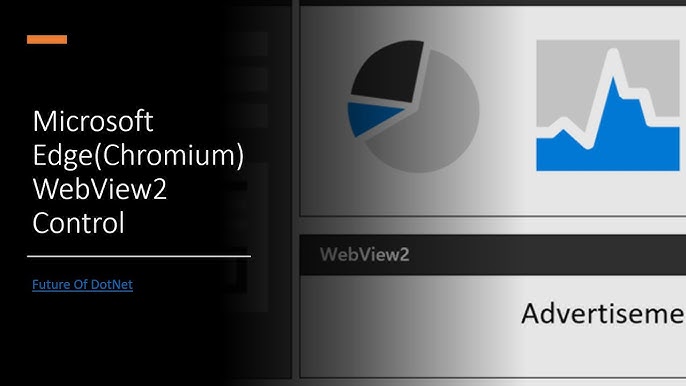This is a list of operators in the C and C programming languages.All the operators listed exist in C; the fourth column 'Included in C', states whether an operator is also present in C. Note that C does not support operator overloading. C (/ s iː /, as in the letter c) is a general-purpose, procedural computer programming language supporting structured programming, lexical variable scope, and recursion, with a static type system. Apr 18, 2021 Why does C-SPAN take viewer calls? One of C-SPAN's founding philosophies was focusing on the viewer and, through our call-in programs, viewers are able to interact directly with elected officials.
C or Do is the first note of the C majorscale, the third note of the A minor scale (the relative minor of C major), and the fourth note (F, A, B, C) of the Guidonian hand, commonly pitched around 261.63 Hz. The actual frequency has depended on historical pitch standards, and for transposing instruments a distinction is made between written and sounding or concert pitch.
In English the term Do is used interchangeably with C only by adherents of fixed-Do solfège; in the movable Do system Do refers to the tonic of the prevailing key.
Frequency[edit]
Historically, concert pitch has varied. For an instrument in equal temperament tuned to the A440 pitch standard widely adopted in 1939, middle C has a frequency around 261.63 Hz (for other notes see piano key frequencies). Scientific pitch was originally proposed in 1713 by French physicist Joseph Sauveur and based on the numerically convenient frequency of 256 Hz for middle C, all C's being powers of two. After the A440 pitch standard was adopted by musicians, the Acoustical Society of America published new frequency tables for scientific use. A movement to restore the older A435 standard has used the banners 'Verdi tuning', 'philosophical pitch' or the easily confused scientific pitch.
Octave nomenclature[edit]
Middle C[edit]
Middle C (the fourth C key from left on a standard 88-key piano keyboard) is designated C4 in scientific pitch notation, and c′ in Helmholtz pitch notation; it is note number 60 in MIDI notation.[1]
C# Edge Browser Control Type
While the expression Middle C is generally clear across instruments and clefs, some musicians naturally use the term to refer to the C note in the middle of their specific instrument's range. C4 may be called Low C by someone playing a Western concert flute, which has a higher and narrower playing range than the piano, while C5 (523.251 Hz) would be Middle C. This technically inaccurate practice has led some pedagogues to encourage standardizing on C4 as the definitive Middle C in instructional materials across all instruments.[2]
On the Grand Staff, middle-C is notated with a ledger line above the top line of the bass staff or below the bottom line of the treble staff. Alternatively, it is written on the centre line of a staff using the alto clef, or on the fourth line from the bottom, or the second line from the top, of staves using the tenor clef.
C# Edge Browser Control Example


Other octaves[edit]
In vocal music, the term High C (sometimes less ambiguously called Top C[3]) can refer to either the soprano's C6 (1046.502 Hz; c′′′ in Helmholtz notation) or the tenor's C5; both are written as the C two ledger lines above the treble clef but the tenor voice sings an octave lower. The term Low C is sometimes used in vocal music to refer to C2 because this is considered the divide between true basses and bass-baritones: a basso can sing this note easily, whereas other male voices, including bass-baritones, typically cannot.
Tenor C is an organ builder's term for small C or C3 (130.813 Hz), the note one octave below Middle C. In stoplists it usually means that a rank is not full compass, omitting the bottom octave.
Designation by octave[edit]
| Scientific designation | Helmholtz designation | Octave name | Frequency (Hz) | Other names | Audio |
|---|---|---|---|---|---|
| C−1 | C͵͵͵ or ͵͵͵C or CCCC | Octocontra | 8.176 | Play | |
| C0 | C͵͵ or ͵͵C or CCC | Subcontra | 16.352 | Play | |
| C1 | C͵ or ͵C or CC | Contra | 32.703 | Play | |
| C2 | C | Great | 65.406 | Low C, cello C, 8' C (see organ pipe length) | Play |
| C3 | c | Small | 130.813 | 4' C or tenor C (organ), viola C | Play |
| C4 | c′ | One-lined | 261.626 | Middle C | Play |
| C5 | c′′ | Two-lined | 523.251 | Treble C, high C (written an octave higher for tenor voices)[4] | Play |
| C6 | c′′′ | Three-lined | 1046.502 | High C (soprano) | Play |
| C7 | c′′′′ | Four-lined | 2093.005 | Double high C[citation needed] | Play |
| C8 | c′′′′′ | Five-lined | 4186.009 | Eighth octave C, triple high C | Play |
| C9 | c′′′′′′ | Six-lined | 8372.018 | Quadruple high C | Play |
| C10 | c′′′′′′′ | Seven-lined | 16744.036 | Quintuple high C | Play |
Note that for a classical piano and musical theory, the middle C is usually labelled as C4; However, in the MIDI standard definition (like the one used in Apple's GarageBand), this middle C (261.626 Hz) is labelled C3. In practice, a MIDI software can label middle C (261.626 Hz) as C3-C5, which can cause confusion, especially for beginners.
Graphic presentation[edit]
Wpf Edge Browser Control
Scales[edit]
Common scales beginning on C[edit]
- C Major: C D E F G A B C
- C Natural Minor: C D E♭ F G A♭ B♭ C
- C Harmonic Minor: C D E♭ F G A♭ B C
- C Melodic Minor Ascending: C D E♭ F G A B C
- C Melodic Minor Descending: C B♭ A♭ G F E♭ D C
Diatonic scales[edit]
- C Ionian: C D E F G A B C
- C Dorian: C D E♭ F G A B♭ C
- C Phrygian: C D♭ E♭ F G A♭ B♭ C
- C Lydian: C D E F♯ G A B C
- C Mixolydian: C D E F G A B♭ C
- C Aeolian: C D E♭ F G A♭ B♭ C
- C Locrian: C D♭ E♭ F G♭ A♭ B♭ C

Jazz melodic minor[edit]
- C Ascending Melodic Minor: C D E♭ F G A B C
- C Dorian ♭2: C D♭ E♭ F G A B♭ C
- C Lydian Augmented: C D E F♯ G♯ A B C
- C Lydian Dominant: C D E F♯ G A B♭ C
- C Mixolydian ♭6: C D E F G A♭ B♭ C
- C Locrian ♮2: C D E♭ F G♭ A♭ B♭ C
- C Altered: C D♭ E♭ F♭ G♭ A♭ B♭ C
See also[edit]

References[edit]
- ^'MIDI Note/Key Number Chart', computermusicresource.com
- ^Large, John (February 1981). 'Theory in Practice: Building a Firm Foundation'. Music Educators Journal. 32: 30–35.
- ^Harold C. Schonberg (November 4, 1979). 'Birgit Nilsson – The Return of a Super-Soprano'. The New York Times.
- ^'The Note That Makes Us Weep' by Daniel J. Wakin, The New York Times, September 9, 2007
Most Watched
Greta Thunberg Testifies Before House Oversight Committee
Climate activist Greta Thunberg testifies before Congress on Earth Day. The hearing comes on the same day that President Biden holds a virtual climate summit with world leaders.
White House Press Secretary Holds Briefing
White House Press Secretary Jen Psaki briefs reporters and responds to questions on the Biden administration’s agenda. She’s joined by U.S. Special Envoy for Climate John Kerry and White House National Climate Adviser Gina McCarthy.
Washington Journal: News Headlines and Viewer Calls
Join us with your calls and comments on social media as we review the latest news headlines out of Washington.
President Biden Says U.S. Will Cut Greenhouse Gas Emissions in Half by 2030
President Biden and Vice President Harris deliver remarks at the virtual Leaders Summit on Climate. The president announces that the U.S. will commit to cutting its greenhouse gas emissions in half by 2030.

Coming Soon
NASA TV SpaceX Prelaunch Coverage and Launch
Coverage of the prelaunch and launch of SpaceX Crew Dragon “Endeavour” to the International Space Station. The spacecraft will launch from Florida’s Kennedy Space Center.
View More NASANASA Officials Hold Post Launch News Conference on SpaceX Launch
NASA officials hold a SpaceX Crew Dragon post launch news conference from Kennedy Space Center in Florida.
View More NASAQ&A
Susan Page
USA Today Washington bureau chief Susan Page, author of “Madam Speaker,” talks about the life and political career of Democratic congresswoman Nancy Pelosi, who became the first female Speaker of the House in 2007.
View More Q&AAuthor Discussion on the Impact of COVID-19
Book TV provides coverage of the 2021 Virtual San Antonio Book Festival.
View More Book TVFrom A Taller Tower
Book TV provides coverage of the 2021 Virtual San Antonio Book Festival.
View More Book TVAfter Words
John Woodrow Cox
Washington Post staff writer John Woodrow Cox reports on the effects of gun violence on children in America. He’s interviewed by Teachers College, Columbia University health education associate professor Sonali Rajan.
View More After Words
Featured Clips
Senate Republicans Unveil $568 Billion Infrastructure Plan
House GOP Leader McCarthy Responds to Former President Bush's Criticism of the Party
Greta Thunberg Opening Statement on Climate Change
Latest On
Justice Department Investigation of Minneapolis Police Practices
Attorney General Merrick Garland announces a civil investigation into and a comprehensive review of Minneapolis Police Department practices. He says if unconstitutional and unlawful practices are found, a report on the findings will be made public.
View AllU.S. Capitol Police Inspector General Testimony on January 6 Attack, Part 2
U.S. Capitol Police Inspector General Michael Bolton testifies before the House Administration Committee on his report on the January 6 attack on the U.S. Capitol.
View AllCOVID-19 Pandemic and Air Travel Safety
Aviation industry officials and public health experts testify on air travel safety amid the coronavirus pandemic.
View All
